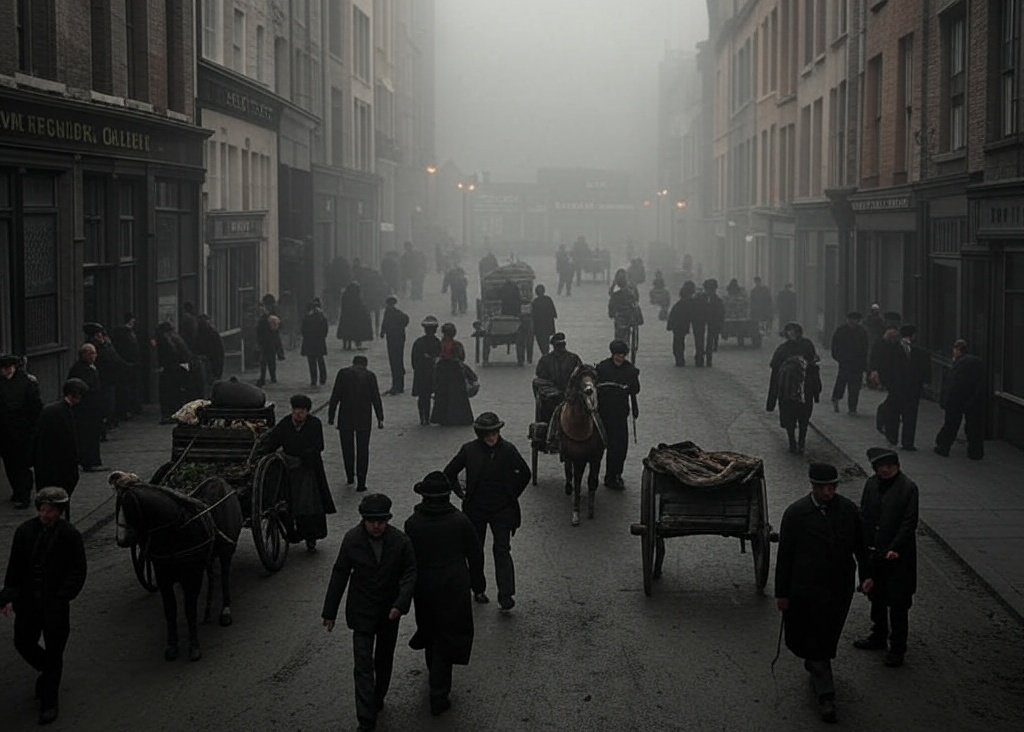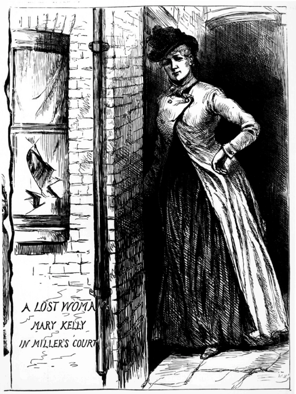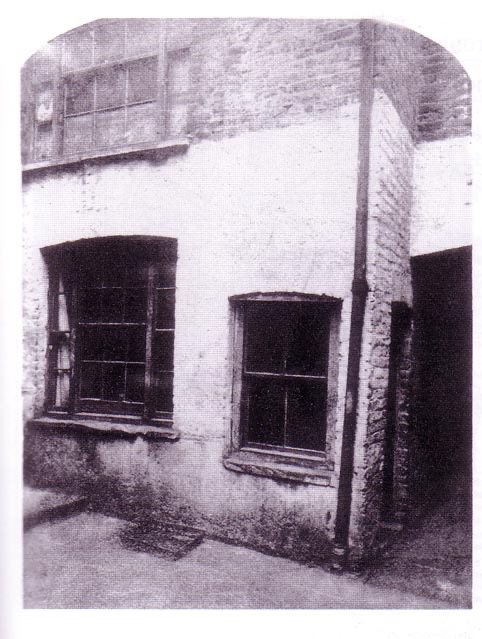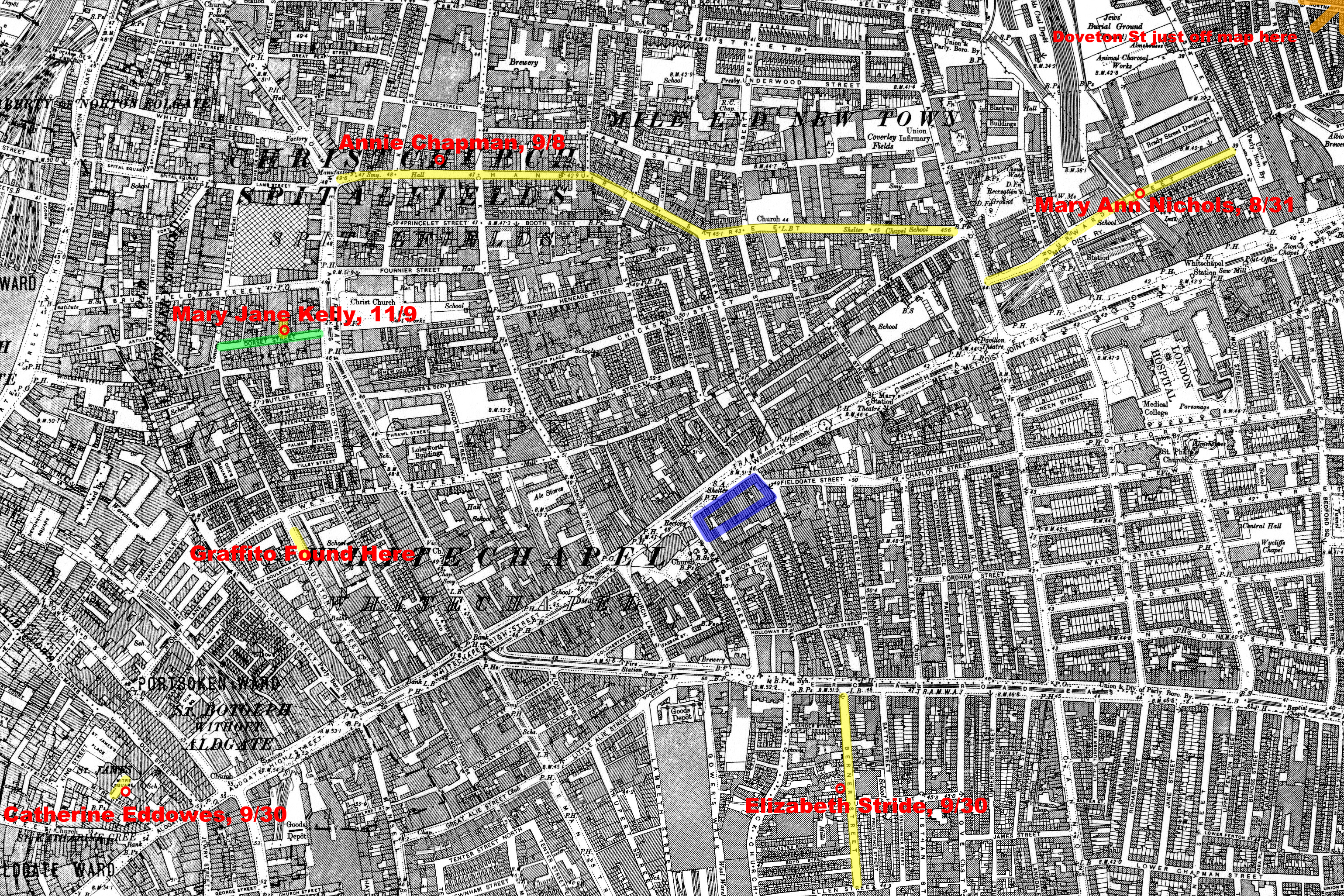Unmasking Jack the Ripper: A Fresh Investigation into the Whitechapel Murders, Part 5
Posted on 06/09/2025 at The Curmudgeon’s Chronicle

The Final Murder – Mary Jane Kelly and Narrowing the Field
After the double event on September 30, 1888, Whitechapel was a cauldron of fear. The murders of Elizabeth Stride and Catherine Eddowes in a single night had shocked London, and the Ripper’s audacity – leaving a bloodied apron and cryptic graffito in Goulston Street – only deepened the terror. Police patrols intensified, vigilante groups roamed the streets, and the East End’s residents lived in dread, wondering when the killer would strike again. For six weeks, an eerie silence held – until November 9, 1888, when the Ripper returned with a vengeance, claiming his final canonical victim in a murder so savage it would haunt history: Mary Jane Kelly.
In this fifth part of our investigation, we’ll step into the grim confines of 13 Miller’s Court, Dorset Street, to examine Kelly’s murder – the most brutal of the series. Using only 1888 evidence – police reports, inquest testimony, and contemporary accounts – I’ll evaluate our four suspects: Charles Cross, Joseph Barnett, Aaron Kosminski, and David Cohen. Cross and Kosminski have been neck-and-neck, but Kelly’s murder brings Barnett into sharp focus, given his personal connection to her. I’ll assign likelihoods for this murder and adjust their overall probabilities for the series, narrowing the field as we approach my final reveal in the next part. Let’s enter the heart of Whitechapel and face the Ripper’s most horrific act.
The Murder of Mary Jane Kelly
Mary Jane Kelly, at 25, was the youngest of the canonical victims – a lively Irishwoman known for her beauty, with long blonde hair and a fair complexion. Unlike the others, Kelly had a semi-permanent home: a single room at 13 Miller’s Court, a cramped alley off Dorset Street, rented for 4s 6d a week. She shared this space with Joseph Barnett, a fish porter, until their split on October 30, 1888, over her prostitution and his frustration at her taking in other women (inquest, November 12, 1888). Kelly was in rent arrears, and on the night of November 8, she was seen soliciting clients to make ends meet.
Witness accounts paint a fragmented picture of her final hours. At 11:45 p.m. on November 8, Mary Ann Cox, a neighbor, saw Kelly walking into Miller’s Court with a “blotchy-faced” man, stout, about 36 years old, wearing a billycock hat and carrying a pot of ale – she appeared drunk (inquest). At 2:00 a.m. on November 9, George Hutchinson, an acquaintance, saw Kelly outside her room with a well-dressed man – 30-ish, 5’6”, pale, with a dark mustache, wearing an astrakhan coat and a horseshoe tie pin (police statement, November 12, 1888). Hutchinson watched them enter her room, hearing Kelly say, “Alright, my dear, come along, you’ll be comfortable.” At 3:00 a.m., Cox heard a woman’s voice – possibly Kelly’s – cry “Oh, murder!” from the court, though such cries were common in Whitechapel (inquest). Elizabeth Prater, another neighbor, heard a faint cry of “Oh, murder!” between 3:30 and 4:00 a.m. but dismissed it (inquest).

Artist's Rendering of Mary Jane Kelly
At 10:45 a.m., Thomas Bowyer, sent by landlord John McCarthy to collect rent, knocked on Kelly’s door. Getting no answer, he peered through a broken window and saw a scene of horror: Kelly’s body on the bed, her throat slashed to the spine, her face “hacked beyond recognition,” her abdomen emptied, and her heart missing (inquest). Dr. George Bagster Phillips, who arrived at 11:15 a.m., called it “savage… overkill,” estimating death between 2:00 and 8:00 a.m., likely closer to 3:00 a.m. based on rigor and body warmth (inquest). Her legs were spread, her body disemboweled, and organs were placed around the room – on the bed, the table, even under her head. The mutilation took time, possibly hours, in the privacy of her room, a stark contrast to the hurried street killings. Inspector Walter Beck and Superintendent Thomas Arnold led the investigation, but no weapon was found, and the killer had vanished (MEPO 3/140).
Kelly’s murder marked the end of the canonical five – a crescendo of violence that left Whitechapel reeling. But who could have committed such an act in the intimacy of her own room?

Mary Jane Kelly’s room at 13 Miller’s Court, Whitechapel.
The Suspect Field: A Killer in Her Room
Kelly’s murder, with its unparalleled savagery and the privacy of an indoor setting, shifts our focus. Barnett, her former lover, takes center stage, but Cross and Kosminski remain in the hunt. Let’s evaluate each suspect’s fit for this crime, narrowing the field as we approach our conclusion.
- Charles Cross (aka Charles Lechmere): Cross, 39, lived at 22 Doveton Street, 0.9 miles from Miller’s Court – a familiar distance within Whitechapel’s web. The timing of Kelly’s death – likely around 3:00 a.m. – aligns with Cross’s early morning patterns, as seen with Nichols (3:40 a.m.), though it’s earlier than his usual commute. Cross’s familiarity with Dorset Street, a major East End thoroughfare, makes his presence plausible – he could have passed through while Kelly solicited clients. Neither Cox’s “blotchy-faced” man (36, stout) nor Hutchinson’s “astrakhan” man (30-ish, 5’6”, well-dressed) perfectly matches Cross, who was 39 and likely dressed as a working-class carman, but witness descriptions in Whitechapel’s dim streets are often unreliable. The savagery of Kelly’s murder shows a killer at his peak, fitting Cross’s possible progression from Nichols’ crude cuts to Eddowes’ surgical precision, though his lack of a flesh-cutting trade remains a challenge to this escalation. Cross’s calm demeanor at Nichols’ scene and his presence there keep him in the frame – could he have known Kelly, a Dorset Street regular, and unleashed his rage in her room? I assign Cross a 40–45% likelihood for Kelly’s murder, maintaining his 75–80% for Nichols, 55–60% for Chapman, and 50–60% for the double event, with an overall probability of 40–45% for the series – still a strong contender, but this crime tests his fit.
- Joseph Barnett: Barnett, 30, lived on Dorset Street until October 30, 1888, when he left Kelly at 13 Miller’s Court after a fight over her prostitution (inquest, November 12, 1888). By November 9, he was staying at Buller’s lodging house, 0.3 miles away, but he knew Kelly’s habits, her room, and her vulnerabilities – making him the only suspect with a direct connection to a victim. Barnett visited Kelly between 7:00 and 8:00 p.m. on November 8, speaking with her in her room, and claimed he left to play whist at Buller’s, an alibi the police accepted (MEPO 3/140). But the timing of Kelly’s death – around 3:00 a.m. – leaves a window: Barnett could have returned after midnight, especially if driven by jealousy or rage over her continued prostitution. Cox’s “blotchy-faced” man (36, stout) doesn’t fit Barnett, who was slimmer at 30, but Hutchinson’s “astrakhan” man (30-ish, 5’6”) is closer to his age and build, though the fine clothes are a stretch for a fish porter. Barnett’s skills as a fishmonger align with Kelly’s precise mutilations, but this precision clashes with Nichols’ crude cuts, suggesting a progression that doesn’t fully fit a personal motive focused on Kelly. His familiarity with her room, however, explains the indoor setting and the time taken for such savagery. Inspector Abberline cleared Barnett after a four-hour interrogation, finding no blood on his clothes (MEPO 3/140), but could he have cleaned up? Barnett’s motive and access make him a prime suspect for this murder, though his lack of connection to the other victims weakens his case for the series. I give Barnett a 55–60% likelihood for Kelly’s murder, up from 30–35% for Chapman and 25–30% for the double event, with an overall probability of 30–35% for the series – he’s a strong contender here but lags overall.
- Aaron Kosminski: Kosminski, 23, lived in Sion Square, 0.5 miles from Miller’s Court – closer than Cross and squarely in the murder zone. His nocturnal habits as an unemployed barber (1891 asylum notes) fit the 3:00 a.m. timeline, consistent with his patterns during the double event (1:00–1:45 a.m.). Dorset Street, a hub for prostitution, was a likely haunt for a wandering man like Kosminski, increasing the chance he encountered Kelly. Hutchinson’s “astrakhan” man (30-ish, 5’6”) doesn’t match Kosminski – he was younger, 23, and 5’5” – and Cox’s “blotchy-faced” man (36, stout) is also a stretch, but his “Jewish” appearance might align with broader witness profiles. Kosminski’s alleged madness – “homicidal tendencies,” per Sir Melville Macnaghten (1894) – fits Kelly’s extreme mutilation, the most savage of the series, and his lack of a flesh-cutting trade aligns with the progression from Nichols to Eddowes, though the precision in Kelly’s murder pushes this theory. The Goulston Street graffito from the double event tied Kosminski to suspicion of a Jewish killer (Swanson, 1910), but there’s no direct evidence linking him to Kelly or her room – no 1888 record places him at the scene (MEPO 3/140). Kosminski’s proximity and psychological profile keep him in the frame, but the lack of a personal connection to Kelly and the indoor setting weaken his case compared to Barnett. I give Kosminski a 40–45% likelihood for Kelly’s murder, maintaining his 55–60% for Chapman and 60–65% for the double event, with an overall probability of 35–40% for the series – he’s slipping behind.
- David Cohen: Cohen, 23, was admitted to Colney Hatch Asylum in December 1888, with a possible address at Mile End Workhouse, 1 mile from Miller’s Court – farther than the others but still in the East End. Some link him to “Nathan Kaminsky,” possibly at Black Lion Yard, 0.4 miles away (Fido, 1987), but there’s no 1888 record to confirm this. The 3:00 a.m. timeline fits a vagrant’s wandering habits, and Cohen’s “violent, noisy” behavior in the asylum aligns with Kelly’s savage mutilation. But like Kosminski, he lacks a personal connection to Kelly, and his lack of a flesh-cutting trade clashes with the precision of her injuries. Neither witness description fits Cohen (height unknown), and his profile echoes Kosminski’s, with a later timeline (post-Kelly) weakening his case. There’s no evidence placing him at the scene, and the indoor setting doesn’t favor a vagrant. I assign Cohen a 25–30% likelihood for Kelly’s murder, maintaining his 30–35% for Chapman and the double event, with an overall probability of 25–30% for the series – he’s falling further behind.

Whitechapel Map: Highlights Dorset Street and Miller’s Court, marking the spot of Mary Jane Kelly’s body in 13 Miller’s Court, among other sites.
The Field Narrows
Kelly’s murder was the Ripper’s final canonical act – a brutal crescendo that marked the end of his spree. Barnett surges ahead for this killing, his motive and access to Kelly making him a compelling suspect, but his lack of connection to the other victims limits his overall case. Cross holds steady, his consistent proximity and presence at Nichols’ scene keeping him in the lead for the series, though this indoor murder tests his fit. Kosminski and Cohen lag – proximity and madness keep them in play, but the personal nature of Kelly’s killing favors Barnett and challenges their profiles.
The stage is set for our conclusion. In the next part, I’ll reveal my top suspect, presenting the case for Jack the Ripper – and the defense will have their say.
Does Barnett’s connection to Kelly make him the Ripper, or does Cross’s consistency hold the truth? Share your thoughts in the comments below, and join me next time as I reveal my top suspect – and put them on trial.